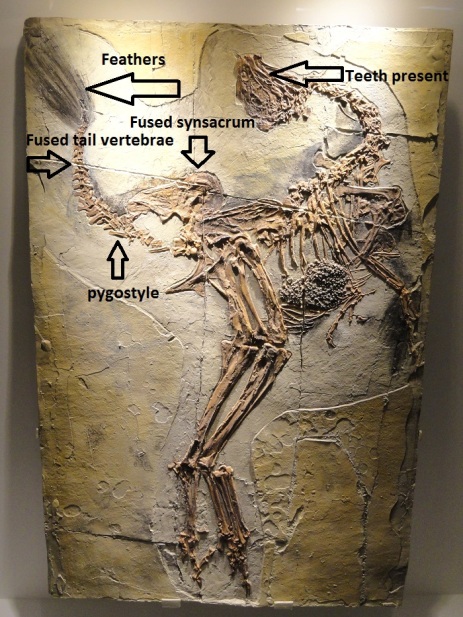A recent paper on the purported feathers on dinosaurs raised some eyebrows. We have come to expect these papers to appear a couple of times a year if not more in evolutionary circles. It’s part of their bread and butter. However, when it is presented at the International Conference on Creation, I sit up and take notice. This is my response to that paper. Admittedly this is abbreviated and does not cover everything that paper addressed. However, I felt it was important to address immediately the core, underlying issues with the paper so that my readers could stay well informed on what is going on in baraminology.
The first point I should make here is that the majority of this paper focuses on computer modeling of baraminology. This renders it subject to the old computer adage, GIGO: Garbage in, Garbage out. In other words, what you put into the computer and the math involved predicts what you will get out of it. Not to say computer modeling is not helpful, it can be extraordinarily helpful. When it comes to origins and predicting datapoints about the past, however, it is less helpful because you cannot feed in as much observational data as you can in the present. For example, when comparing dinosaurs and birds, you cannot compare internal anatomy such as lungs and muscles, because these are soft tissue and thus do not fossilize as well. This leads to the potential of establishing false relationships which we will get to momentarily.
Birds and dinosaurs have some very unique features that define them besides their feathers or lack thereof. Bird feathers attach directly to bone. They are not attached to the skin as mammalian hair is. Birds also have a unique form of balance. Their tails are largely weightless, even in fossilized birds with extended tail bones. This is due to a lack of muscle. While the muscle does not fossilize well, the bones of the tail are largely fused together and lack a specialized haemal arch that reptiles have which houses the major blood vessels necessary for a muscular tail. The base of the tail, called a pygostyle, will occasionally have this canal because it serves as the point of attachment for the muscles that permit the bird to angle or spread its tail feathers. This is a key point to remember. Because the tail is essentially weightless or nearly weightless, it cannot be used to balance, unlike a reptile tail.
Birds do not have an external knee. From the knee up, their legs are internal. This is important because of what it says about balance. If a bird tried to walk as we do from the hip straight down, it would fall flat on its bill. There is too much weight at the front of a birds body for it to walk that way. By having its upper legs inside its body, it moves the balance point forward so that the weight is more evenly distributed. Keep this point in mind, it is important.
Birds have a couple other unique features. They have a pronounced breastbone with a cartilaginous keel which is used for muscular attachment. Since the keel is usually cartilage, it often does not fossilize. The hip area synsacrum, on the other hand, fossilizes well. This consists of vertebrae from the backbone fused with the ischium, ilium and pubic bones of the hip into one structure. Key to note is that all three hip bones do not hang down towards the lower body as the ischium and pubic bones do in reptiles. Instead, they fuse to the synsacrum and curl up towards the tail. This is very important to keep in mind. Note that these features are all present on the Archaeopteryx diagram below. And yes, even evolutionists admit Archaeopteryx was a bird. I have labeled a couple of key features for reference.

Now, with that brief introduction to bird anatomy is out of the way, let us look at the rest of the ICC report. These authors basically data mined evolutionary literature and took every example of a feathered dinosaur that they found to use in a baraminology study. There is a huge problem with this methodology. For one, evolutionary literature studies are notoriously biased. For example, consider Caudipteryx which is considered a theropod dinosaur, and is an oft-cited example of a feathered dinosaur in the ICC paper. Then compare the image of Archaeopteryx above.

Note the similarities. Caudipteryx has all the features of a true, albeit likely flightless, bird. Yet evolutionists have it classed as a small dinosaur. This is absurd. If Caudipteryx tried to walk like a dinosaur, it would have fallen flat on its face because there is no weight to the tail. It only makes sense to view this fossil as a true bird. But that doesn’t fit the paradigm.
We could go one for a long time taking apart each proposed feathered dinosaur for the same reason or similar ones. That’s not the issue here, however. What these ICC authors failed to account for was the massive bias present in evolutionary literature. There are birds with feathers and dinosaurs with scutes. The two do not mix together. The ICC authors are wrong in using computer modeling to try to find kinds instead of simply studying the anatomy of the creatures as they are observed in the fossil record.
For those who want to wade through it, I have linked to the ICC paper below.
For a full overview of the currently known feathered dinosaurs, check out my presentation Feathered Dinosaurs on YouTube.



3 Comments